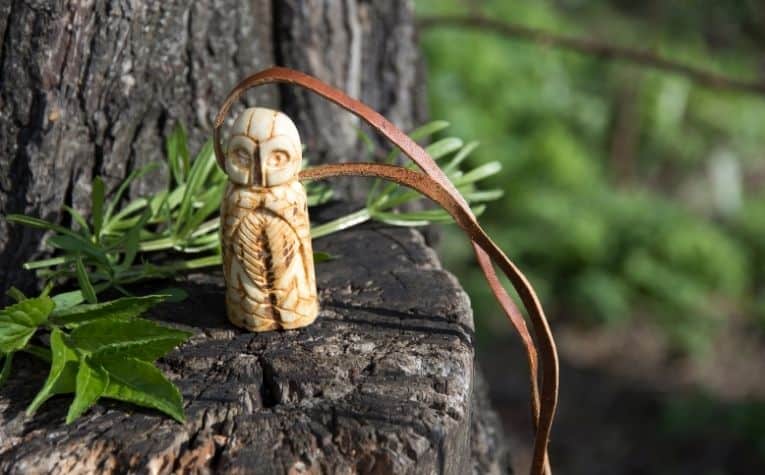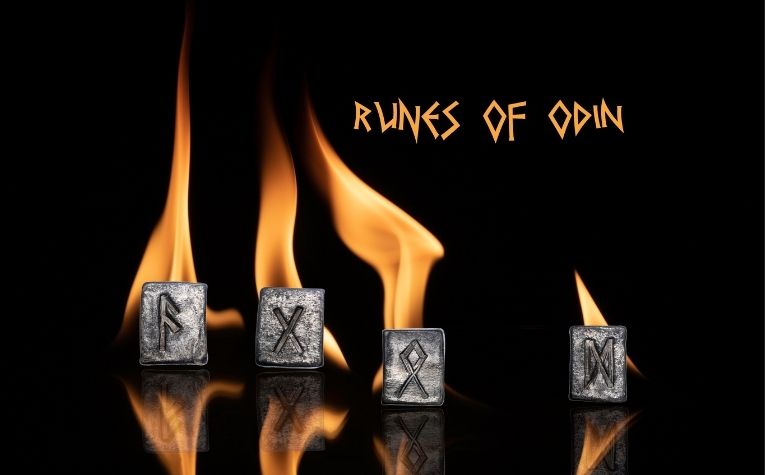The Norse people worshiped a large pantheon of gods and goddesses for centuries before the first Christian missionaries arrived on Scandinavian soil.
As Norse paganism enjoys a robust revival in the modern era, the all-father Odin is once again a significant spiritual figure in the 21st century.
The all-father Odin figures prominently in all modern Norse religion iterations, including Asatru, Odinism, and heathenry.
In all of these beliefs systems, the ideals and virtues that Odin has embodied for nearly a millennium are very much pertinent and inspirational to their growing ranks of believers.
Just like the Scandinavians of yesteryear, followers of modern Norse religion are turning to Odin for spiritual guidance and assistance in getting through life’s challenges.
Things have changed from the Viking Age to today’s digital age, but through it all, Odin remains as steadfast of a guiding light today as he did nearly a thousand years ago, albeit with a few modern twists. Keep reading to learn more.
Also, see 10 Goddesses in Norse Mythology That You Need to Know.

Do People Still Believe in the Norse God Odin?
To appreciate the importance of Odin and understand his relevance in today’s world, one needs to look no further than the modern iterations of Norse religion and its beliefs and practices. Modern Norse religion goes by many names, including:
- Heathenry
- Paganism
- Odinism
The most prominent form of contemporary Norse religion is more commonly known as Asatru, meaning “belief in the gods.”
Asatruars (as followers of Asatru are known) take a quasi-reconstructionist view toward their revival of old Norse religious and spiritual ideology.
Like their Viking and Scandinavian predecessors, modern practitioners of Asatru are steadfastly polytheistic.
Among the many gods and goddesses that comprise the Norse pantheon of deities, Odin is in a class all by himself.
What does Odin Represent to Modern Believers?
Understanding the unique nexus between Odin and his believers requires an examination of the complex relationship between those who practice Norse religion (such as Asatruars) and their gods and goddesses:
- Contrary to popular belief or conventional thinking, practitioners of Norse religion (past and present, for that matter) do not worship their deities in the same subservient manner that followers of the world’s major religions worship their respective God
- Rather, Asatruars and their compatriots view their relationship with Odin, Thor, and Freyja et al., as a form of kinship through which respect is paid to specific deities during special rites and ceremonies, or when a dire or challenging situation presents itself and godly intervention is needed
- Practitioners of modern Norse religion view myths and stories involving Norse gods and goddesses as thought-provoking spiritual tales from which valuable life lessons can be learned and insights into nature’s truths can be gained [1]
Thus, while a relative few view Odin and his cohorts as actual beings who walk among the inhabitants of the earthly realm, others view them in a metaphorical light as embodying certain virtues and attributes that pertain to the human narrative. [2] (Also see Do Norse Gods Age and Die?)
As the high priest of Iceland’s Asatru Association (Iceland’s fastest-growing religion and largest non-Christian church) so aptly states about the modern interpretation of Odin:
“I don’t believe anyone believes in a one-eyed man who is riding about on a horse with eight feet. We see the stories as poetic metaphors and a manifestation of the forces of nature and human psychology.” [3]
Also, see Why Does Odin Only Have One Eye?

The Role of Odin in Modern Norse Religion
Centuries ago, the Vikings looked to Odin to guide their forces to victory on the fields of battle. Individual warriors prayed that should they fall, they do so in an honorable way that would earn them entry into the halls of Valhalla.
In modern Norse religious practice, however, while Odin is still honored with blots, rites, and offerings of food and drink, the objectives for doing so have changed.
Odin, the God of Wisdom and Enlightenment
Of all the myths and stories featuring Odin, the most enduring and inspirational are those detailing his insatiable thirst for knowledge and enlightenment. (See the full article Does Odin Live in Valhalla?)
His quests to acquire the gift of poetry, unlock the mystery of the ancient Norse runes, and drink from the well of knowledge are the stuff of legends.
Therefore, it should come as no surprise that Odin is most often looked to for wisdom and guidance.
Naturally, this should not be taken to mean that an offering of food or drink to the all-father will result in a 50-point increase in one’s I.Q. or that ancient runes will magically make sense.
Rather, through his many exploits, Odin serves as a source of inspiration and perspective:
- Determination to carry on under difficult circumstances, particularly where complex life choices are involved
- Seeking answers to life’s most difficult questions and not relenting when explanations are elusive and not forthcoming
- Accepting the fact that wisdom is infinite and has no bounds and that the pursuit of knowledge is as much the reward as the teachings themselves [4] [5]
Even for those who serve as spiritual leaders in the modern Norse religion, Odin plays a significant role.
One of the three attributes that an Asatru high priest or priestess must possess is the wisdom of Odin (the other two attributes are the strength of Thor and the love of Freyja). [6]
Also, see Norse Gods vs. Greek Gods: What’s the Difference? to learn more.
Modern-Day Recognition of Odin
For as long as Norse religion has been around, the blot has served as one of its most important practices.
Centuries ago, it was a rite that called for the blood sacrifice of an animal to honor the gods; today, deities are honored through the offering of food and drink in their name.
In Iceland, the Asatruarfelagid (the largest recognized pagan church in Iceland) only holds four major blots per year.
One known as the Veturnattablot (the winter blot) is held in Odin’s honor. [7]
Why is Odin Still Popular?
Unlike his muscle-bound son Thor, Odin is not an imposing physical figure with fear-inducing attributes. In fact, he is, in many ways, the antithesis of how a deity of his stature should appear and behave.
Odin is often depicted as a scraggly old man with a wizard’s hat and an eye patch over one eye, hardly an image that is befitting the entire Norse pantheon’s undisputed leader of gods and goddesses.
But because he often wanders about in his never-ending quest for knowledge and enlightenment, his humble appearance becomes an endearing quality that modern practitioners of Norse religion may find easy to relate to but to respect and embrace as well.
Another admirable trait that is unique to Odin is his unflinching resolve to fight the good fight and see things through to the bitter end.
This is despite knowing full well that he and his cohorts of gods and goddesses are doomed to perish in their apocalyptic battle with the giant wolf Fenrir, the colossal serpent Jormungandr, and the Jotnar.
What makes the Ragnarok narrative even more compelling from Odin’s perspective is that one of the key harbingers of its arrival was his beloved son Baldur’s death, which, along with the events and outcome of Ragnarok, was foretold to Odin. [8]
Odin, the God of Many Names
While his son Thor may be the best-known of Norse gods, it is Odin that holds the most titles and whose domain includes the broadest range of traits and abilities.
So prominent is Odin throughout Norse mythology that there are no less than 60 nicknames (each of which pertains to a unique power or attribute) by which he is referred in old Norse poems and sagas.
One of Odin’s most prominent titles is the God of War, but he is more notably associated with attributes relating to the intellectual and spiritual realms.
Indeed, the story of how the one-eyed god sacrificed one of his eyes in exchange for a sip of water from the well of knowledge is one of the most popular tales in Norse mythology.
These are but a few of the titles and distinctions associated with Odin:
- God of Wisdom
- God of Poetry
- God of Runes
- God of Death (overseer of Valhalla)
- God of Magic
Conclusion
Centuries ago, the Scandinavian people worshipped Odin. Today, nearly a thousand years later, he still serves as a vital spiritual beacon for modern followers.
References:
[1] Source
[2] Source
[3] Source
[4] Source
[5] Source
[6] Source
[7] Source
[8] Source
